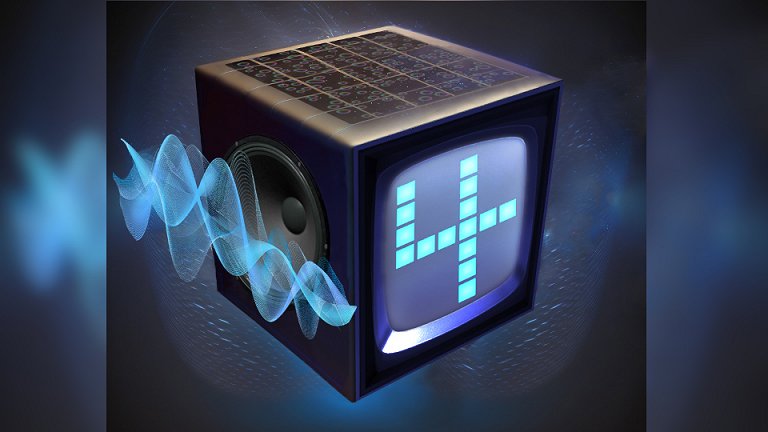Non-living matter recognizes numbers by sound
3 min read
computing
Edited by Tech Innovation Website – 04/04/2023

The material listens to sounds and responds by creating a kind of QR code on its surface, which can be easily read.
[Imagem: UDE/Robin Msiska]
Smart materials
So-called “smart materials” are popping up in an increasing number of searches.
They’re materials that offer a kind of “physical intelligence,” which could be useful from robots to data storage, not to mention the endless new possibilities for sensors.
These experiments raised the question of the limits of this bodily intelligence. For example, is it possible for inanimate matter to quickly and efficiently recognize patterns?
Robin Msiska and colleagues at the University of Duisburg-Essen in Germany decided to tackle this question. They did this from a theoretical and experimental point of view, starting with an already existing and well-specified material, which was one of the stars of a new generation of data processing and storage systems.
The conclusions were surprising to anyone who believed that only living things could interact with the environment.

The magnetic vortices of the material act under the propulsion of electrical voltages applied by 39 electrodes.
[Imagem: Robin Msiska et al. – 10.1002/aisy.202200388]
Computational materials
To conduct their tests and develop their theory, the researchers used speech recognition, taking audio recordings of spoken numbers — the numbers 0 through 9 — from a standard database.
The physicists analyzed the type and intensity of the frequencies involved for each moment of each spoken word. They then converted this information into electrical potential signals, which they then applied to a thin magnetic film via 39 contacts.
This thin-film material contains tiny magnetic vortices, called magnetic vortices, which interact with electric potential by deformation – this is one way to use striae to store data, although there are much more advanced demonstrations of, for example, correlating magnetic computation with reservoir computation .
Simply put, can you imagine [nosso aparato experimental] as a black-and-white grid pattern that changes shape in response to input signals,” Misiska explained.
The result is that when “listening” to the sounds that bear the number’s name, matter reacts by forming unique patterns in its magnetic vortices for each spoken number, as if it were a QR code, generated automatically and almost instantly. The response can then be read linearly using simple methods.

The sounds are converted into an electrical potential and then applied to the material, which responds very accurately to each sound.
[Imagem: Robin Msiska et al. – 10.1002/aisy.202200388]
Self-driving cars and medical checkups
The Smart Things correctly recognized 97.4% of the spoken numbers. When only female voices were used, the hit rate rose to 98.5%. “This shows the best performance ever reported for materials-based computers,” said Professor Karen Evershore Sett, coordinator of the team.
And the material does this in the smallest of spaces: the sample the physicists worked on is only a micrometer long.
“If one uses a neural network, training is expensive and requires huge data sets. Our materials system can solve machine learning problems without building a system of millions of interconnected neurons — the speech recognition shown here is just one example. It’s faster and uses less,” Karen said.
In his view, it is possible to think of many potential applications for these responsive materials, especially when many signals need to be detected and interpreted, such as in autonomous vehicles, in weather forecasting or in medical settings.
In fact, the focus of the research is now shifting to a standard medical test, the electroencephalogram (EEG), which measures the electrical activity of the brain. The team is investigating whether the magnetic system can independently explain these results.
condition: Sound rating with Skyrmion tanks
Writers: Robin Msiska, Jake Love, Jeroen Molkers, Jonathan Lillyart, and Karen Evershore Set
Journal: Advanced Intelligent Systems
Volume: 2200388
DOI: 10.1002/aisy.202200388
Other news about:
More topics

“Entrepreneur. Music enthusiast. Lifelong communicator. General coffee aficionado. Internet scholar.”


:strip_icc()/s04.video.glbimg.com/x720/11792055.jpg)

:strip_icc()/s03.video.glbimg.com/x720/11786998.jpg)



